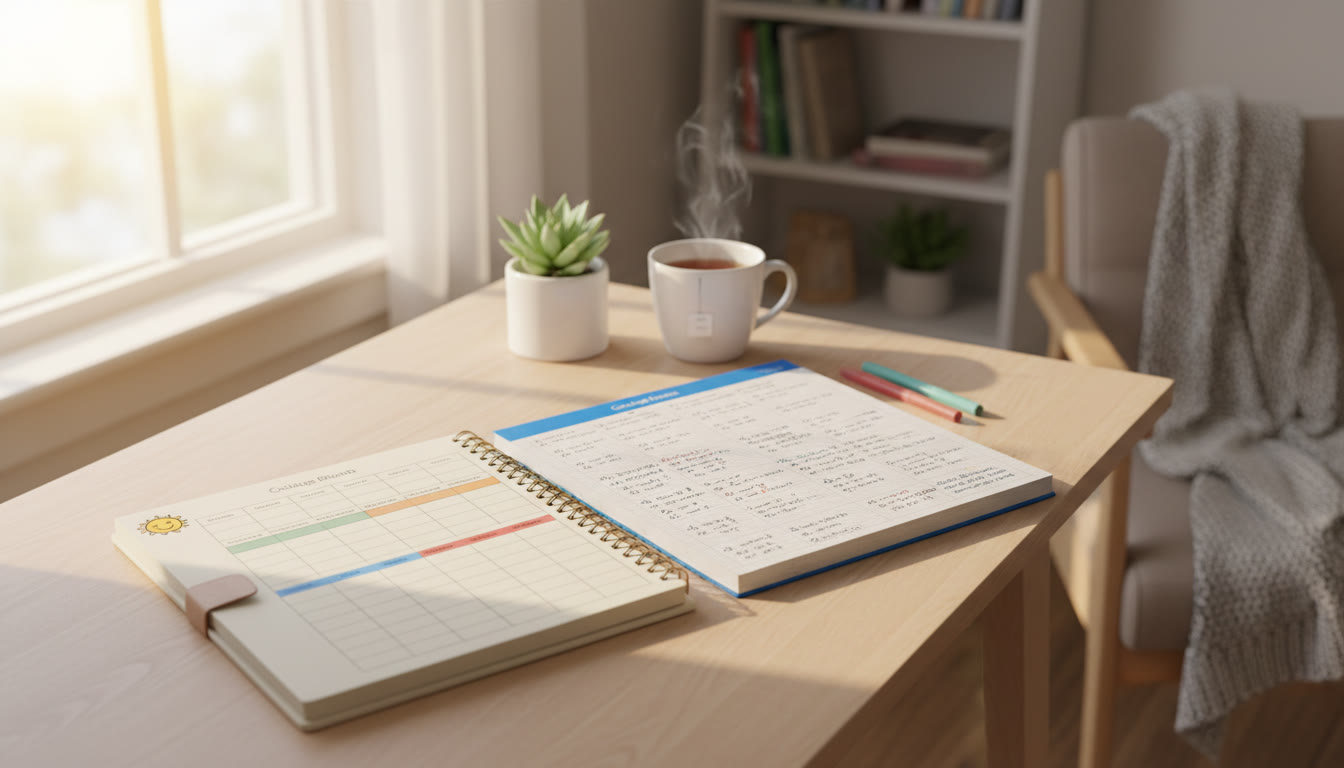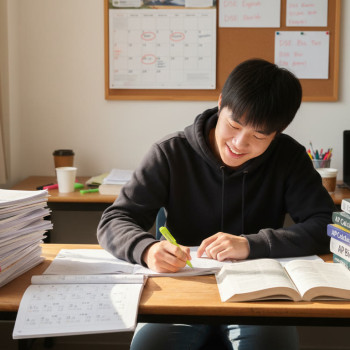Parent Red Flags: When Burnout Is Building
There’s a hush that settles over the house after a long day: textbooks closed, a phone face-down, the soft glow of a desk lamp — and a teenager who seems distant, already halfway out of the conversation. For parents of AP students, that quiet can be peaceful… or it can be a warning sign. Burnout doesn’t always arrive with dramatic meltdowns; often it sneaks in as small, steady shifts in mood, behavior, and energy. This post is written for you: the observant parent who wants to notice the red flags early, respond with care, and help your child finish strong without losing themselves in the process.
Why AP Season Feels Like a Pressure Cooker
AP courses are intense by design. They’re college-level classes in a high-school timeline, packed with rigorous content, frequent assessments, and the added weight of college-credit hopes. Add extracurriculars, college applications, family expectations, and a teenager’s natural developmental changes, and it’s easy to see how stress can compound into burnout.
Burnout is not laziness. It is a state of emotional, physical, and mental exhaustion caused by prolonged stress and high expectations. Recognizing it early lets you intervene gently and effectively — with strategies that honor both your child’s goals and their health.

Subtle Red Flags Parents Often Miss
Burnout rarely shows up as a single dramatic event. Here are the quieter signs that something is off:
- Consistent disengagement: Homework left unfinished, once-loved subjects suddenly met with indifference.
- Perfectionism turned paralysis: Avoiding starting work because it “won’t be good enough.”
- Frequent headaches or stomachaches: Physical symptoms that increase around study sessions or tests.
- Sleep disruption: Either insomnia from worry or excessive sleep to escape stress.
- Mood swings and irritability: Small frustrations explode, or your teen becomes persistently flat.
- Withdrawal from friends or activities: Missing practices, club meetings, or casual hangouts they used to enjoy.
- A drop in academic performance despite more time spent studying: This is a classic burnout sign — effort increases but returns diminish.
Quick Self-Check Table: How Close Is Burnout?
| Behavior | Occasional | Frequent | Severe |
|---|---|---|---|
| Missed assignments | Sometimes | Regularly | Multiple classes |
| Complaints of pain or sickness | Rare | Weekly | Daily |
| Withdrawal from friends | Sometimes | Often | Isolated |
| Changes in sleep | Occasional | Persistent | Severe disruption |
Scan across rows: multiple ‘Frequent’ or any ‘Severe’ columns mean it’s time to act.
How to Start the Conversation — Without Escalation
The right conversation can be a turning point. The wrong one can push a teen further inward. Use this guide to make your outreach feel supportive rather than judgmental.
1. Begin with curiosity, not conclusions
Open with observations and empathy. Try something like, “I’ve noticed you’re skipping dinner and looking wiped out after study nights — are you feeling overwhelmed?” This approach expresses care and invites dialogue, rather than accusation.
2. Name specific behaviors
Instead of “You’re burned out,” say “I noticed you haven’t been to soccer practice this week and your AP Physics homework is piling up.” Specifics feel less like criticism and more like care.
3. Validate feelings, then problem-solve together
Teens are more likely to accept help if they first feel heard. Reflect their emotions — “I can see how this would feel like too much” — then ask, “What do you think would help right now?”
Practical Steps to Prevent and Repair Burnout
Once the conversation has opened, concrete steps help turn relief into lasting change. Mix short-term fixes with longer-term systems so your child can recover and build resilience.
Immediate actions (first 1–2 weeks)
- Trim commitments temporarily: A short pause in a club or reduced practice can create breathing room.
- Build micro-rests: 5–10 minute breaks after 25–30 minutes of focused study (Pomodoro-style) can reset attention.
- Re-establish sleep hygiene: No screens 30–60 minutes before bed, consistent sleep/wake times, and a calm pre-sleep routine.
- Ask for small wins: Set tiny, achievable study goals to rebuild confidence — e.g., complete one practice FRQ or review one chapter summary.
Systemic changes (months)
- Prioritize subjects: Not all AP classes require equal time every week. Focus on the ones with exams coming up or where the student feels least confident.
- Create a flexible study plan: Block study hours, but allow swaps for off-days. Consistency beats last-minute marathon sessions.
- Teach study skills: Active recall, spaced repetition, and targeted practice are more efficient than longer passive reading sessions.
- Monitor workload with teachers: If several teachers assigned heavy work at once, a short, respectful email or conversation with the school can lead to staggered deadlines.
How parents can model balance
Actions speak louder than advice. Show your teen how to manage stress by modeling your own healthy routines: scheduled breaks, reasonable work hours, and keeping perspective about grades versus growth.
When to Ask for Extra Help
Some moments call for outside support. There’s strength in getting help early — it prevents small problems from becoming crises.
Signs it’s time for professional support
- Persistent depressive symptoms or anxiety that affects daily functioning.
- Self-harm, talk of hopelessness, or any safety concerns.
- Academic decline despite putting in time and effort.
- Physical symptoms that don’t improve (sleep, appetite, frequent illnesses).
If any of the above appear, reach out to your pediatrician, school counselor, or a mental health professional. For academic struggles, targeted tutoring or academic coaching can be a practical bridge back to confidence.
How tutoring can help without increasing pressure
Tutors are most helpful when they diagnose gaps, build efficient study habits, and restore momentum. Personalized 1-on-1 guidance can translate confusing subjects into manageable steps, making study time more effective and less draining. Tools that combine expert tutors with data-driven insights can also identify which skills to prioritize so your teen spends time on high-impact practice — not endlessly re-reading chapters.
For parents considering options, look for tutors who emphasize study skills, test strategies, and emotional support — not just content drilling. A balanced approach helps students learn smarter, not just longer.
Study Strategies That Reduce Burnout
Changing how your child studies often reduces hours of ineffective effort. Here are research-backed techniques that deliver more learning with less exhaustion.
Active recall and spaced repetition
These techniques move information from short-term to durable memory. Use flashcards, practice questions, and periodic review schedules. Short, frequent retrieval practice trumps long passive reading sessions.
Mix problem types (interleaving)
Instead of practicing one kind of problem for an hour, mix different types. This trains adaptability and mirrors the varied questions students will face on AP exams.
Practice under realistic conditions
Timed practice tests are invaluable. They reduce test anxiety and teach time management. But don’t overdo full-length exams: reserve them as checkpoints rather than daily rituals.
Make study plans visual and flexible
Use a weekly board or calendar where tasks are visible. Let your teen move tasks when needed — flexibility reduces the sense of failure when plans shift.
Balancing Ambition with Compassion
Helping a motivated teen navigate AP season is equal parts logistics and emotional intelligence. Celebrate ambition, but insist on boundaries. Remind your child that their worth is not an AP score. Encourage a growth mindset: mistakes reveal gaps to fix, not proof of incapacity.
Language that supports recovery
- Use process-focused praise: “I noticed how you broke that topic into small steps.”
- Avoid labeling: Don’t call them “stressed” as a permanent identity — it’s a state, not a trait.
- Encourage breaks that actually refresh: time outside, creativity, or social connection, not doomscrolling on devices.
Sample Weekly Reset Plan (For a Burned-Out Week)
| Day | Focus | Action |
|---|---|---|
| Monday | Assess | Short conversation to list stressors; pick 3 priorities for the week. |
| Tuesday | Trim | Pause one extracurricular or reduce practice time by 50% for the week. |
| Wednesday | Rebuild | 1-hour focused study using Pomodoro intervals; use active recall. |
| Thursday | Refresh | Outdoor activity or hobby for 60–90 minutes; no schoolwork allowed. |
| Friday | Check-In | Family meal and open talk about progress and feelings. |
| Weekend | Practice + Play | One timed practice exam section + long social or creative activity. |
Why this works
The plan alternates demand with recovery. It prevents the all-or-nothing cycles where teens binge study then crash. Small, consistent actions rebuild competence and reduce dread.

Long-Term Resilience: What Parents Can Build Now
Beyond short-term fixes, parents can help teens develop lifelong learning skills and resilience that extend well past AP season.
Teach metacognition
Help your child learn how they learn. Ask questions after study sessions: “What worked? What felt wasted? How could you test your understanding next time?” Metacognition turns frustrating study into a growth process.
Normalize help-seeking
Create family norms that asking for help is smart. Whether it’s a teacher, tutor, or peer study group, help-seeking reduces isolation and speeds recovery from setbacks.
Keep the bigger picture in view
College admissions care about sustained curiosity, contributions to community, and intellectual growth — not just perfect AP scores. When burnout threatens a student’s health, focusing only on test results can be counterproductive. Help your teen recall why they chose these classes in the first place — the interests, opportunities, and future doors they represent.
How Sparkl’s Personalized Tutoring Can Fit In — Sensibly
For families considering external academic help, personalized tutoring can be a surgical solution rather than another source of pressure. Sparkl’s approach — one-on-one guidance, tailored study plans, expert tutors, and AI-driven insights — can help identify specific gaps and recommend high-impact practice so students study smarter, not longer. Tutors who also coach study habits and test-taking strategies can reduce wasted time and restore confidence, which directly counters burnout.
Importantly, tutoring should feel like a partnership: collaborative, paced, and responsive to your child’s emotional needs. When tutoring becomes an added source of stress, it’s doing the opposite of what it should.
Final Notes for Parents: Gentle, Practical, Hopeful
Burnout around AP season is common. It’s not a moral failing in your child or you. It’s a signal that expectations, routines, or supports need recalibration. Your role as a parent is not to remove all challenges, but to ensure your child is challenged in ways that build competency, not damage it.
Look for the quiet red flags. Open conversations with compassion. Use small, concrete steps to restore balance. And when needed, bring in targeted help that reduces pressure rather than adds to it. With the right combination of empathy, strategy, and support, your teen can complete their AP journey with strengths intact — and learn skills that will serve them well beyond high school.
If You’re Unsure Where to Start
Begin with one conversation this week. Pick a calm moment, name one specific observation, and ask an open question. That single step often unlocks the next. You don’t have to fix everything at once; steady small changes compound into meaningful recovery.
Closing Thought
Parenting through AP season is a marathon of attention and care. When you notice the signs early and respond with empathy and practical action, you give your child not only the chance to succeed in exams but the gift of learning how to thrive under pressure. That skill — balancing ambition with wellbeing — is the true test score that lasts a lifetime.




















No Comments
Leave a comment Cancel